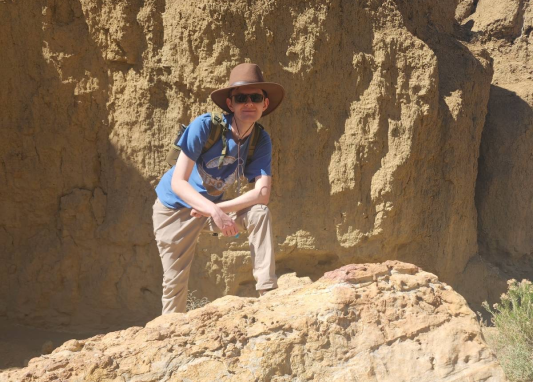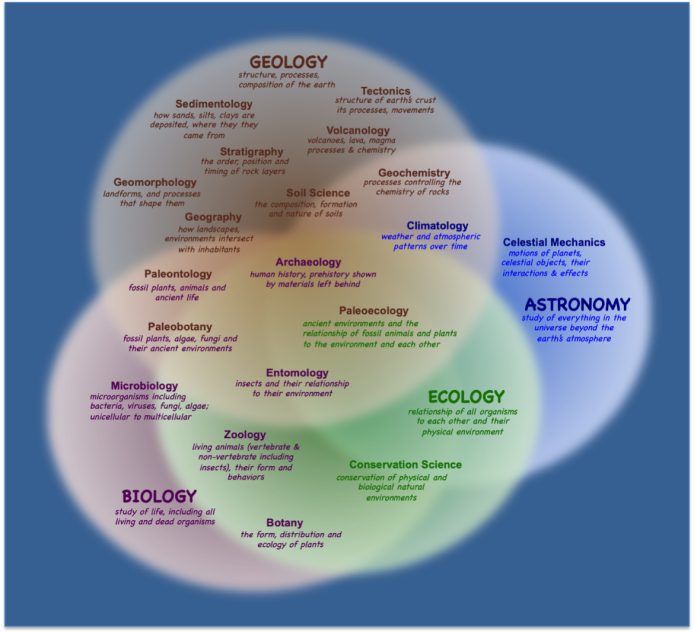Education & Outreach
Education Outreach Programs
Outreach programs manifest our core RFS value of lifelong learning. Our programs meet four requirements:
- They ignite curiousity
- They immerse the participant in the natural world
- They invite speculative creativity
- They inspire the pursuit of further learning
If we are successful, we will imbue new generations of all ages with science appreciation and wonderment that can influence their vocational and avocational pursuits. We put special emphasis on participation of under-served communities to enrich learning and life opportunities.
K-12 Program

RFS is working with its partner institutions to develop educational field experiences for K-12 students and their teachers. Early topics in hands-on earth science, biology and botany, with an introduction to astronomy are envisioned.
We are in discussion with our university and museum partners about formulating curricula for the Field Station and classroom pre-trip and follow-up materials. Curricula currently in development for undergraduate learning are designed to be adaptable for junior high and high school level learning.
Undergraduate Program

Our charter partner, New Mexico State University (NMSU) is committed to using the Field Station as a key part of their capstone course in field geology for senior level geology majors. In 2024 they mapped and developed curricula for that course, which will be open to undergraduate student from other institutions.
We foresee an intensive 1-week, 1 unit field course for freshmen and non-majors as a way to introduce field sciences to undergraduate students who may not have had a chance to explore these fields.
Universities of all sizes are also welcome to develop curricula tailored to their specific needs, or they may work with NMSU to leverage their curriculum development.
Indigenous, Underserved & Local Community Outreach

Indigenous, underserved communities and local outreach is a priority we will continue to support, develop and expand. We are working hand-in-hand with our indigenous advisors and students to develop respectful, inclusive experiences tailored to culturally diverse learners.
We are committed to integrating students and learners of all kinds from these
communities into our ongoing research, programs and discoveries.
We are actively seeking partners with whom to develop learning and research programs.
Public Outreach & Citizen Science

It is our goal to invite individuals, families, and senior groups to immerse themselves in learning about and appreciating the natural wonders at the Field Station.
We envision offering citizen science opportunities to support to our museum and university research programs, by collecting data by mapping, sampling and photographing less explored reaches of the property and its surrounding accessible lands.
We are developing short field seminars on topics such as wilderness medicine and survival, and hosted our first citizen scientists in paleontological fieldwork in 2025.
Educational Materials
The Sciences of Reynolds Field Station
The natural environment of the Reynolds Field Station presents an entire constellation of sciences to study and understand, both as individual disciplines and more powerfully, as overlapping and interdependent disciplines. The diagram below captures the many sciences that come into play at RFS, and highlights why interdependent, cross-disciplinary collaboration is core to the way research is conducted at RFS.
Many, if not most, researchers are highly specialized, with deep knowledge in very specific subjects. To develop a broad understanding and complete perspective for reconstructing the environment or answering a scientific question at RFS, it is essential to integrate multiple sources of expertise in interpretations of the data the physical environment there provides. This is the key aspect of the approach we take in our scientific research programs. In education, we focus on teaching the principles of interpreting what the field environment is telling us in multiple dimensions, and augment that back in the lab with microscopic and chemical analyses. Interpretation is also predicated on consistency with regional context, to ensure we are not crafting “postage stamp” conclusions. This approach necessarily includes reaching out to researchers working outside our back yard, in our quest to tackle “Big Science Questions”.

Glossary of Field Station Sciences and Terminology
To assist in understanding the descriptions of science programs and papers presented on our website, we offer this glossary of technical vocabulary in simple language, explained in the context of the Reynolds Field Station. If you see a word you aren’t familiar with on our web pages, check out the Glossary for a plainEnglish explanation!
We are also continuously creating short, explanatory white papers, or offering references to sources that explain key topics. You are welcome to submit requests (link) for definition additions or white papers to be added to this website.
White Papers
In this section we will present White Papers written in plain, everyday language that explain some of the science behind the research and learning at the Field Station. Here is a list of the White Papers we are working on, check the News section for new additions to this space, or Contact Us to be added to our mailing list so we can let you know when we add new material.
- Life on the Shores of the Western Interior Seaway 85 Million Years Ago
- A description of how and where the Seaway formed, and its imprint on the climate, life and rocks we see at the Field Station with lots of pictures to help you visualize the ancient life.
- The Power of Paleobotany: A Story of Global Domination
- The amazing story of how fossils of plants, bug tracks, pollen and spores provide clues to help us recreate the environment and allow us to paint a picture of life 85 million years ago. Paleobotany is filling in a gap in our understanding of how and when flowering plants migrated to our latitudes from the tropics and came to dominate the landscape on the planet.
- Geochemistry Magic: Retracing the Cross-Country Journey of Sand Grains 85 Million Years Ago
- An explanation of the high tech tools that coax astonishing, hidden secrets from tiny grains of sand in the rocks collected at the Field Station. How do we tell what mountain ranges produced the sand grains that journeyed to our ancient shoreline, and when were those distant mountain ranges shedding all that sand? What were the temperatures back then? Geochemistry unlocks the answers!
- CSI RFS: The Mystery of the Siderites
- The evolving Crime Scene Investigation surrounding the great mystery that New Mexico State University geologists are working on in Program NMSU003 (see the Programs & Research Page) will be revealed as we progressively uncover clues. Just like a CSI case, they are using super high tech tools to tease out the mysterious origins of a rock we are finding all over the Field Station, called siderite. We believe solving this mystery will shed light on some of the Big Science Questions currently unanswered at RFS. Join us as we build the case!

INTERESTED IN LEARNING MORE?
Explore With Us!
We are passionate about the sharing the amazing environment and scientific learning opportunities at the Reynolds Field Station. We encourage you to Contact Us about ways you and your institution can participate in exploring and contributing to the science and appreciation of this natural wonderland. We are a 501(c)(3) public charity and welcome donations that will enable travel expenses, grants and scientific equipment for learners who need assistance participating at the Field Station.
